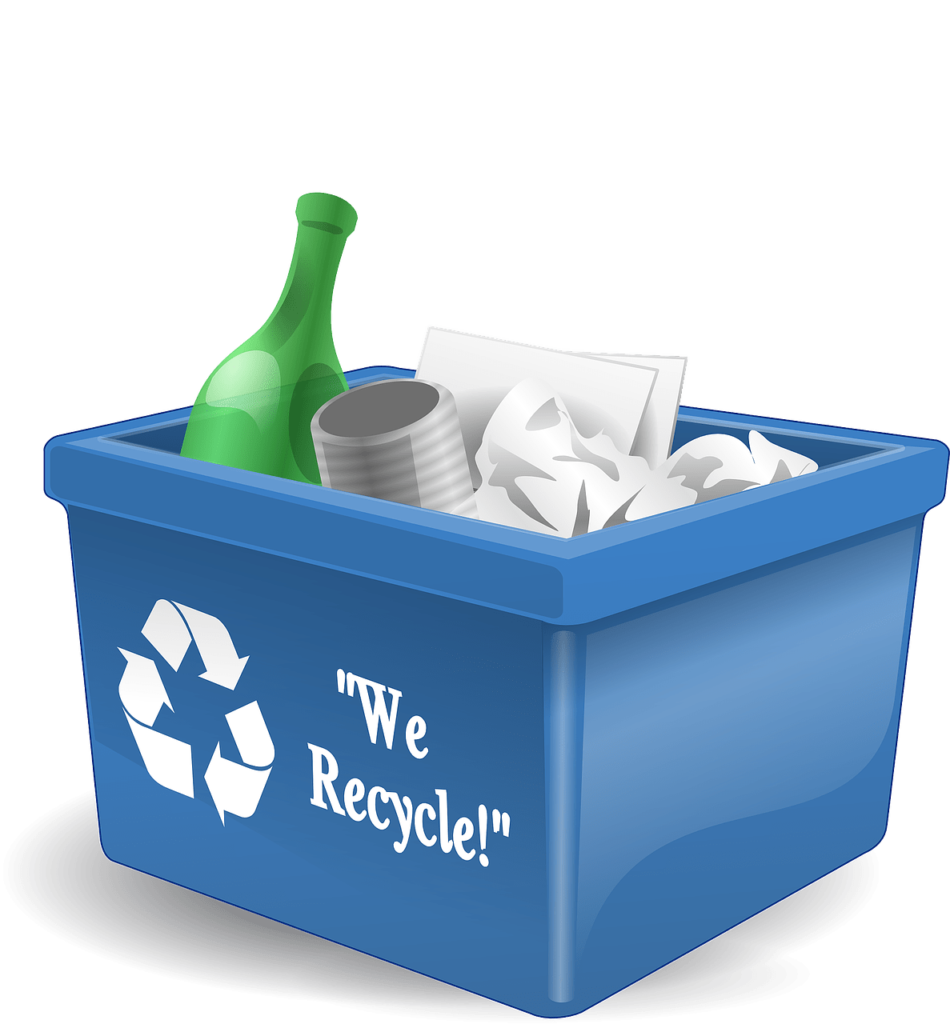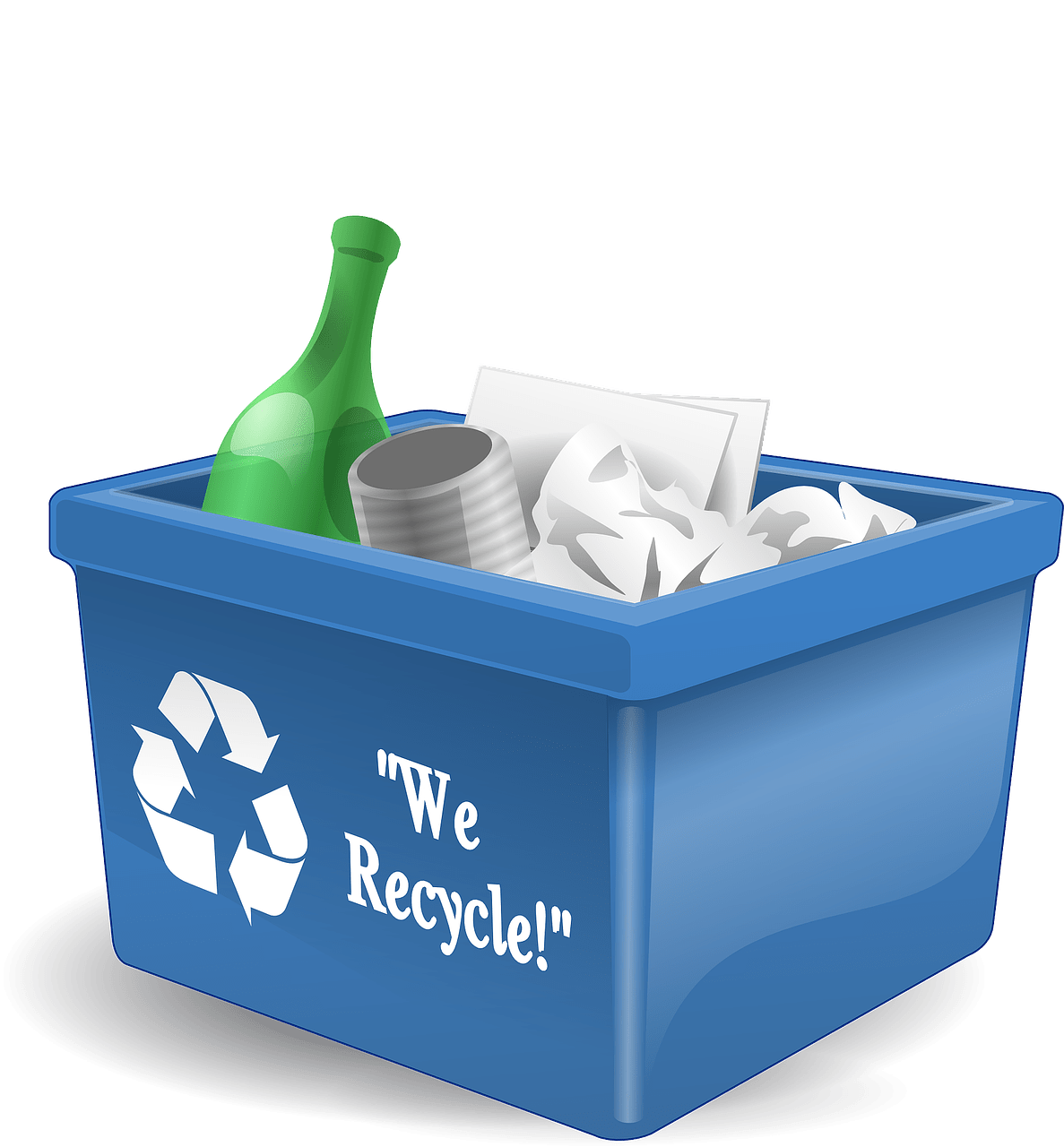Whether you use plastic boxes for storage, organization, or transport, it’s important to give them the protection they deserve. In this ultimate guide, we will explore the best ways to shield your plastic boxes from wear and tear, ensuring their durability and longevity. From simple maintenance tips to innovative protective solutions, you’ll discover everything you need to know to keep your plastic boxes in pristine condition. Say goodbye to cracked corners, faded colors, and broken lids – let’s dive into the world of protecting plastic boxes.
Choosing the Right Material for Plastic Boxes
When it comes to plastic boxes, choosing the right material is crucial in ensuring their longevity and functionality. Considerations for material selection include the intended use of the boxes, the environment they will be stored in, and the level of durability required.

This image is property of pixabay.com.
Considerations for Material Selection
Before purchasing plastic boxes, it is important to assess your specific needs and requirements. Consider factors such as the weight and fragility of the items that will be stored in the boxes, as well as any potential exposure to harsh conditions, chemicals, or extreme temperatures.
Types of Plastic Materials for Boxes
There are various types of plastic materials commonly used in the manufacturing of plastic boxes. Each material has its own unique properties, making it suitable for different applications. Some common types of plastic materials used for boxes include polypropylene (PP), high-density polyethylene (HDPE), and polycarbonate (PC).
Polypropylene (PP) is known for its lightweight and durable nature, making it an excellent choice for general-purpose storage. High-density polyethylene (HDPE), on the other hand, is more resistant to chemicals and has a higher impact strength, making it suitable for transporting hazardous materials or storing liquids. Polycarbonate (PC) is a versatile material that offers a high level of impact resistance, making it ideal for applications that require extra durability.
Comparing Material Durability
When comparing the durability of different plastic materials for boxes, it is essential to consider factors such as impact resistance, temperature resistance, and chemical resistance.
Polypropylene (PP) is generally durable but has lower resistance to high temperatures and chemicals compared to HDPE and PC. High-density polyethylene (HDPE) offers excellent resistance to chemicals and can withstand a wider range of temperatures. Polycarbonate (PC) is highly impact-resistant and can handle extreme temperatures, making it suitable for more demanding applications.
Proper Handling and Storage
While choosing the right material for plastic boxes is important, proper handling and storage practices are also crucial in maintaining their integrity and longevity. By following some simple guidelines, you can prevent unnecessary wear and tear on the boxes.
Avoiding Rough Handling
One of the key aspects of proper handling is to avoid rough handling of plastic boxes. Dropping or mishandling boxes can lead to cracks, breakages, and other forms of damage. Ensure that individuals handling the boxes are aware of their fragility and understand the proper way to handle them without putting excessive force on the corners or sides.
Stacking Boxes Safely
When it comes to storing plastic boxes, proper stacking is essential to prevent damage. Ensure that boxes are stacked evenly and on a secure and stable surface to prevent them from toppling over. Avoid stacking boxes too high to prevent them from collapsing under their weight. If stacking multiple boxes, it is advisable to use interlocking lids or inserts to provide additional stability.
Storing Boxes in Temperature-Controlled Environments
Extreme temperatures can have a detrimental effect on the durability and integrity of plastic boxes. To protect them from temperature damage, it is important to store them in temperature-controlled environments. Avoid exposing plastic boxes to excessive heat, extreme cold, or rapid temperature fluctuations as these can cause warping, cracking, or weakening of the material. If storing boxes outdoors or in uncontrolled environments, consider using insulated covers or climate-controlled storage solutions.
Using Protective Packaging Materials
In addition to proper handling and storage, using protective packaging materials can provide an extra layer of protection for your plastic boxes and the items stored within them. There are several options available for protecting your boxes and preventing damage.
Bubble Wrap and Cushioning Materials
Bubble wrap is one of the most commonly used protective packaging materials. It provides excellent cushioning by absorbing shock and preventing impact-related damage. When wrapping plastic boxes with bubble wrap, ensure that all sides and corners are adequately covered to minimize the risk of damage during transit or storage. Additionally, other cushioning materials such as foam peanuts or air-filled cushions can be used to fill empty spaces within the box and provide added protection.
Foam Inserts for Added Protection
Foam inserts are another effective way to protect plastic boxes and their contents. Customizable foam inserts can be designed to fit the shape and size of the items being stored. The foam acts as a protective barrier, preventing items from shifting or rubbing against each other, which can cause scratches or breakages. Foam inserts also absorb shock and vibration during transportation, minimizing the risk of damage.

This image is property of pixabay.com.
Using Dividers and Inserts
Dividers and inserts are useful for organizing the contents of plastic boxes and protecting them from potential damage. Dividers can be used to create separate compartments within a box, allowing for the safe storage of multiple items. Inserts, such as foam or cardboard, can be used to provide additional support and protection, especially for delicate or fragile items. By separating and securing items within the box, you can minimize the risk of them coming into contact and causing damage to each other.
Applying Protective Coatings and Films
Another way to protect plastic boxes from wear and tear is by applying protective coatings or films. These additional layers provide an extra level of defense against scratches, impact, and other forms of damage.
Applying Coatings for Scratch Resistance
Applying a scratch-resistant coating to the surface of plastic boxes can help maintain their appearance and integrity. These coatings create a protective barrier that makes the surface more resistant to scratches, scuffs, and abrasions. When selecting a coating, consider the specific purpose of the boxes and choose a coating that offers the appropriate level of resistance to suit your needs.
Utilizing Protective Films
Protective films offer a temporary layer of protection for plastic boxes. These films can be applied to the surface of the boxes, creating a barrier between the box and any potential sources of damage. Protective films are especially useful during transportation or storage, as they can easily be removed once the boxes have reached their destination or the need for protection is no longer required.
Choosing the Right Coating or Film
When selecting a protective coating or film for plastic boxes, consider the specific requirements and conditions they will be exposed to. Some coatings or films may offer better resistance to UV damage, while others may be more suited for high impact or chemical resistance. Take time to research and consult with professionals or manufacturers to ensure you choose the right protective solution for your plastic boxes’ needs.
Implementing Smart Labeling System
A smart labeling system can greatly enhance the organization and efficiency of using plastic boxes. By implementing clear and visible labels, utilizing barcodes or QR codes, and implementing a color-coding system, you can streamline your storage and retrieval processes.
Using Clear and Visible Labels
One of the simplest ways to enhance the usability of plastic boxes is to use clear and visible labels. Clearly categorize the contents of each box, ensuring that the labels are easy to read and understand. Labels should include relevant information such as the contents, date of storage, and any handling instructions. This will make it easier to locate specific items when needed, reducing the time spent searching through multiple boxes.
Using Barcodes or QR Codes
Barcodes or QR codes are a more advanced labeling option that can significantly improve the tracking and management of plastic boxes. By assigning a unique code to each box, you can easily scan and identify its contents, location, and any other relevant information. This streamlines inventory management processes and ensures accurate tracking of boxes throughout their lifecycle.
Implementing Color-Coding System
A color-coding system can be a highly effective method for quickly identifying and organizing plastic boxes. Assign different colors to represent specific categories, types of items, or locations. For example, all boxes containing office supplies can be labeled with a blue color, while those storing electronics can be labeled with a red color. This system allows for easy visual identification, even from a distance, making it a convenient and efficient method for managing and retrieving plastic boxes.
Proper Cleaning and Maintenance
Regular cleaning and maintenance are essential in prolonging the lifespan of plastic boxes and ensuring their cleanliness. By following some simple cleaning guidelines and using appropriate cleaning agents, you can keep your boxes in optimal condition.
Regular Dusting and Wiping
To maintain the cleanliness of plastic boxes, regular dusting and wiping is recommended. Remove any loose debris or dust using a dry cloth or soft brush. For more stubborn stains or dirt, a damp cloth or sponge can be used. Regularly wiping down plastic boxes prevents the accumulation of dirt and dust, keeping them looking clean and fresh.

This image is property of pixabay.com.
Using Non-abrasive Cleaning Agents
When cleaning plastic boxes, it is important to use non-abrasive cleaning agents. Avoid harsh chemicals, abrasive cleaners, or scouring pads, as these can scratch or damage the surface of the boxes. Instead, opt for mild soapy water or gentle household cleaners that are safe for use on plastic surfaces. Always refer to the manufacturer’s guidelines for cleaning recommendations specific to the material of your plastic boxes.
Avoiding Harsh Cleaners or Chemicals
While it may be tempting to use strong cleaners or chemicals to remove stubborn stains or odors, it is important to avoid using harsh cleaners that can damage or weaken the plastic material. Certain chemicals or solvents can cause discoloration, warping, or deterioration of the plastic. Stick to gentle cleaning solutions and avoid exposing plastic boxes to potentially harmful substances.
Handling Extreme Weather Conditions
Plastic boxes can be susceptible to damage when exposed to extreme weather conditions. To protect them from the adverse effects of heat, cold, and UV rays, it is important to implement appropriate measures.
Protecting Boxes from Excessive Heat
Excessive heat can cause plastic boxes to warp, soften, or deform, compromising their structural integrity. To protect boxes from heat damage, avoid placing them in direct sunlight or near heat sources such as radiators or ovens. If storing plastic boxes outdoors, consider using heat-resistant covers, awnings, or shelters to provide shade and prevent direct exposure to intense heat.
Preventing Freezing of Boxes
Extreme cold temperatures can also have detrimental effects on plastic boxes. When exposed to freezing temperatures, some plastics may become brittle and more prone to cracks or breakages. To prevent freezing of boxes, store them in temperature-controlled environments or use insulated covers or wraps to provide additional insulation and protection from the cold.
Protecting Against UV Damage
Prolonged exposure to UV rays can cause plastic to fade, become brittle, or degrade over time. UV radiation is particularly harmful to outdoor storage or when boxes are exposed to sunlight through windows. To protect against UV damage, consider using UV-resistant covers or wraps, or store boxes in shaded areas or climate-controlled environments.
Preventive Measures for Pests and Insects
Pests and insects can cause significant damage to plastic boxes, the contents within them, and the surrounding storage area. By implementing preventive measures, you can minimize the risk of infestations and ensure the integrity of your plastic boxes.
Storing Boxes in Pest-Proof Areas
To prevent pests and insects from infiltrating plastic boxes, it is important to store them in pest-proof areas. Seal any cracks or openings in storage areas to prevent entry points. Use pest-proof containers or shelves to keep pests from accessing the boxes. Additionally, ensure that the surrounding areas are kept clean and free from food or other attractants that may entice pests.
Using Pest-Repellent Products
In areas where pests are a common problem, using pest-repellent products can be an effective preventive measure. Consider using insect traps, repellent sprays, or natural deterrents such as herbal sachets or essential oils. These products can help create a protective barrier around the plastic boxes, reducing the likelihood of infestations.
Regular Inspections for Infestations
Regular inspections for signs of infestations are essential in catching any potential pest problems early on. Look for signs of pest activity such as droppings, chew marks, or webs. If any infestations are detected, take immediate action to eliminate the pests and clean the affected areas thoroughly. Prompt response and preventive measures can help prevent further damage to your plastic boxes.
Proper Transportation and Shipping Practices
If you need to transport or ship plastic boxes, it is important to follow appropriate practices to ensure their safety and minimize the risk of damage during transit.
Using Appropriate Shipping Methods
When shipping plastic boxes, select appropriate shipping methods that provide adequate protection. Consider the fragility and weight of the items being shipped, as well as the duration and conditions of the transportation. Choose shipping methods that offer secure packaging, cushioning materials, and tracking capabilities to ensure boxes arrive at their destination in optimal condition.
Insulating Boxes during Transit
If shipping boxes in extreme temperatures, it is crucial to insulate them to protect against heat or cold damage. Insulated packaging materials, such as thermal liners or cool packs, can help maintain a stable temperature within the boxes during transit. This is particularly important when shipping temperature-sensitive items or to regions with extreme weather conditions.
Securing Boxes During Transport
To prevent boxes from shifting or being damaged during transport, it is essential to secure them properly. Use sturdy packaging materials such as strapping, stretch wrap, or tape to ensure boxes remain closed and intact. Avoid overpacking or underpacking the boxes, as improper packing density can increase the risk of damage. Additionally, label the boxes clearly with relevant handling instructions to ensure they are treated with care during transportation.
Regular Inspection and Replacement of Damaged Boxes
Regular inspection and replacement of damaged boxes are essential in maintaining the integrity and functionality of your plastic boxes. By identifying signs of wear and tear early on and implementing a regular maintenance schedule, you can ensure continuous protection and longevity.
Inspecting Boxes for Wear and Tear
Regularly inspect plastic boxes for any signs of wear and tear. Look for cracks, breakages, or weak spots that may compromise the structural integrity of the boxes. Pay attention to hinges, handles, and corners, as these areas are more prone to damage. If any damage is detected, assess the severity and determine if repairs or replacement is necessary.
Replacing Damaged Boxes
If a plastic box becomes significantly damaged or compromised, it is important to replace it as soon as possible. Continuing to use damaged boxes can result in further damage to the contents within and increase the risk of accidents or injuries. Replace worn-out or broken boxes with new ones that meet the specific requirements of your storage or transportation needs.
Implementing Regular Maintenance Schedule
To ensure the ongoing protection and functionality of plastic boxes, implement a regular maintenance schedule. This can include routine cleaning, inspections, and replacements based on the specific needs of your boxes and their intended use. By staying proactive and addressing any issues promptly, you can extend the lifespan of your plastic boxes and optimize their performance.
In conclusion, protecting plastic boxes from wear and tear requires careful consideration of material selection, proper handling and storage practices, the use of protective packaging materials, applying protective coatings or films, implementing a smart labeling system, regular cleaning and maintenance, handling extreme weather conditions, implementing preventive measures for pests and insects, following proper transportation and shipping practices, and conducting regular inspections and replacements. By following these guidelines and adopting a proactive and preventative approach, you can ensure the longevity, functionality, and integrity of your plastic boxes, protecting them from unnecessary damage and maintaining their usefulness for years to come.
